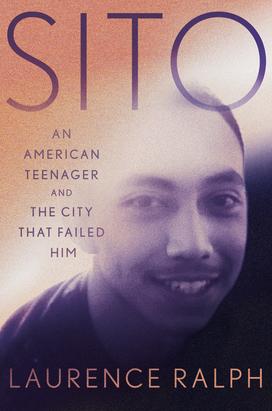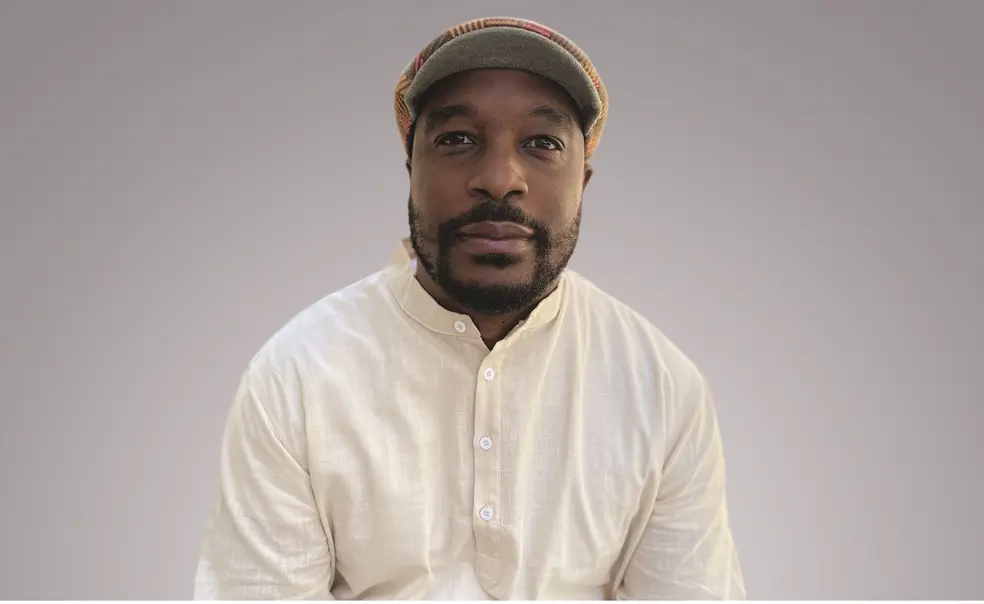Professor Laurence Ralph Explores Violence and the American Justice System Through a More Personal Lens in New Book
The Book: Luis Alberto Quiñonez, “Sito” was 19 years old when he was shot 17 times by 17-year-old Julius Williams. The two had met several years before in another encounter that ended in tragedy when Sito’s friend fatally stabbed Julius’ brother. Ralph approaches this story as an accomplished scholar on systemic issues of class and gang violence, but he also has a more personal anecdote to share. Ralph is the stepfather of Sito’s half brother. A story of anger and grief that was circulated in just a few local media outlets at the time is brought to light to much larger audiences in Sito (Grand Central Publishing/Hachette Book Group).

The Author: Laurence Ralph is a Professor of Anthropology at Princeton University. He received his Ph.D. and a master of arts degree from the University of Chicago. He is broadly interested in urban anthropology, the study of gangs, and more, and has written a multitude of articles and books on these topics. He is the recipient of numerous accolades, including Cultural Anthropology grants from the National Science Foundation.
Excerpt:
Prologue
Sunday in the Mission
It was still hot outside when Luis Alberto Quiñonez—whom everyone called Sito—reached Grant Avenue, in San Francisco’s Chinatown, around 6:30 p.m. on Sunday, September 8, 2019. His girlfriend, Arianna, was with her mother, who had been evicted that day: she had paid her rent late one too many times. “If you don’t move out today,” the landlord told her, “your shit will be in the street.”
“Don’t touch her stuff,” she demanded, stepping between the landlord and her mother. “My boyfriend’s coming right now.”
He’d driven an hour from Oakland in his 1998 Nissan Sentra. Once he arrived, Sito began loading his car. After several trips back and forth between Arianna’s mother’s old place and the new one, Sito made his way back to Curtis Street on the northern outskirts of the Mission District for the final drop-off. It had been years since Sito spent an entire afternoon there, in the Mission. The sun had already set when he carried the last box through the narrow hallway of Arianna’s mother’s new apartment. Sito found one of the few spots in the living room where he could actually see the hardwood floor.
“Gently, gently,” said Arianna’s mother as he put down his box. The sofa was still wrapped in plastic and tape, but Sito collapsed on it anyway.
Just then, Arianna emerged from the kitchen with a glass of water and sat on Sito’s lap. She held the cup as he sipped from it. Sito circled his arms around her waist and rested his chin on her shoulder. Exhausted from the move, Arianna, her mother, and Sito sat in silence, listening to cars pass by outside.
“Okay, I’m ready to see my room now,” Sito joked. Arianna turned and slapped his chest—lightly, affectionately—with the back of her hand. Arianna’s mother looked at the couple with a smile. In that moment she felt her daughter had truly found her first love. Arianna and Sito were both 19.
“Let’s all get something to eat,” Arianna’s mother said. “My treat.” She offered to take them to Bac Lieu, a Vietnamese restaurant on Mission Street that Arianna liked, a thank you for breaking their backs in difficult circumstances—at a moment’s notice, no less.
They decided that the couple would go to Arianna’s place to change out of their sweaty clothes and then meet her at the restaurant in an hour. Sito opened the front door and held it for his girlfriend. The chilly air of a San Francisco evening whooshed in. “See you soon,” Arianna said to her mother.
Sito was from the Mission; he knew the nearest gas station was an Arco off Naples Street, just a few minutes away. They drove past the Cordova Market, the corner store with murals of Jerry Rice and Willie Mays on the outside, and then made a right into the Arco, parking next to the air pump. Sito grabbed a few quarters from the cupholder. “I love you, babe,” he said exiting the car.
Arianna had texted her mother for the address of the restaurant, but she hadn’t received a reply by the time Sito got back in the car. “I’m going to call her,” she told him. Sito tried to exit the Arco while a stream of cars blew by on Geneva Avenue. He made a hard right into heavy traffic, causing Arianna to drop her cell phone underneath the seat. “Sito! Pull over. I can’t find my phone!” He made the next right, onto Athens, and pull over on the street of small houses. Arianna bent over in her seat, hands searching across the floorboard for her cell. “Found it!”
Meanwhile, a person in a hooded sweatshirt stepped up to the Nissan’s driver’s-side window. In an instant, he raised an automatic pistol to the glass and started firing. Bright muzzle flashes split the night like lightning. Despite the shattered glass raining down, Arianna could see the shooter’s dark round eyes and rigid brow. Arianna pulled Sito toward her, away from the incoming fire, taking two bullets in her own arm.
By the time the shooter finished, twenty-one cartridges had battered Sito’s Nissan, inside and out. Seventeen of those bullets cut through Sito’s neck, shoulder, and chest, the fusillade ripping his stomach wide open. It had never occurred to Sito that someone might have followed him that evening and watched him carry a houseplant, a flat-screen TV, and a heavy dresser into Arianna’s mother’s new place. Nor had it occurred to him that someone might have tampered with his car’s tires.
But his killer has been following them for some time, just lying in wait.
Excerpted from Sito: An American Teenager and the City that Failed Him. Copyright © 2024 by Laurence Ralph, and reprinted with permission of Grand Central Publishing/Hachette Book Group.
Reviews:
“With depths beyond depths, this profound book…is a critique, a confession, and a prayer.” – Matthew Desmond, Pulitzer Prize-winning author of Evicted and Princeton professor of sociology
“A readable, empathic portray of a Hispanic teenager whose promising life was cut short because of failures in the criminal justice system.” – The New York Times












No responses yet